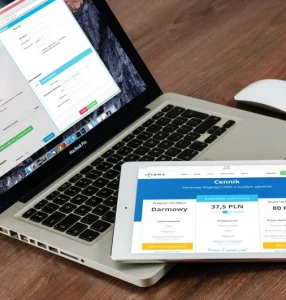Grant writing is a crucial skill for organizations seeking funding to support their projects and initiatives. A well-crafted grant proposal can open doors to significant financial resources, enabling organizations to achieve their goals and make a positive impact in their communities. Whether you’re a nonprofit, educational institution, or a research organization, understanding the nuances of grant writing can be the difference between securing funding and facing rejection.
The impact of a well-written grant proposal extends beyond just obtaining funds. It also reflects the professionalism and credibility of the organization. A compelling proposal not only showcases the project’s worthiness but also demonstrates the organization’s ability to manage and execute the proposed activities effectively. Therefore, mastering the art of grant writing is essential for anyone involved in the pursuit of funding.
This blog aims to provide a comprehensive guide on how to write an effective grant proposal. From understanding the key elements to following a step-by-step approach, we will cover all the essential aspects of grant writing. By the end of this guide, you’ll have the knowledge and tools to craft proposals that stand out to potential funders.
Understanding Grant Writing
Grant writing involves the process of preparing and submitting proposals to request funding from various sources such as government agencies, foundations, and corporations. It is a formal and structured way of presenting a project idea and seeking financial support. The significance of grant writing lies in its ability to secure the necessary resources to implement and sustain important projects.
There are different types of grants available, each with its own set of requirements and guidelines. These include government grants, foundation grants, and corporate grants. Government grants are often highly competitive and come with stringent requirements, while foundation grants may be more flexible but require a strong alignment with the foundation’s mission and priorities. Corporate grants are usually tied to the company’s corporate social responsibility goals and may focus on specific areas such as education, health, or community development.
Understanding the type of grant and the specific requirements is crucial for successful grant writing. It helps in tailoring the proposal to meet the expectations of the funding agency or organization. Additionally, it ensures that the proposed project aligns with the goals and objectives of the grant provider, increasing the chances of receiving funding.
Key Elements of a Grant Proposal
An effective grant proposal typically includes several key elements that provide a comprehensive overview of the project and its significance. The executive summary is a concise introduction that outlines the project, its objectives, and the amount of funding requested. It should capture the reader’s attention and provide a snapshot of the proposal’s main points.
The statement of need explains the problem or issue that the project aims to address. It should provide evidence and data to support the need for the project and demonstrate its relevance and urgency. The project description details the proposed activities, methodologies, and expected outcomes. It should be clear, detailed, and logically organized, outlining how the project will be implemented and managed.
The budget is a critical component of the proposal, providing a detailed breakdown of the project’s financial requirements. It should include all expenses related to the project, such as personnel, materials, equipment, and other costs. The organizational information section provides background information about the organization, its mission, and its capacity to successfully carry out the project. It should highlight the organization’s experience, expertise, and track record in managing similar projects.
Steps to Write a Grant Proposal
The first step in grant writing is to research and identify potential funding sources. This involves finding grant opportunities that align with the project’s goals and objectives. Various online databases, grant writing positions, and networking with other organizations can be useful in identifying suitable funding sources. It’s important to thoroughly review the eligibility criteria and guidelines of each grant to ensure a good fit.
Once potential funding sources have been identified, the next step is to gather all the necessary information and documentation required for the proposal. This includes data and evidence to support the need for the project, detailed descriptions of the proposed activities, and a comprehensive budget. Gathering this information in advance will streamline the writing process and ensure that all required elements are included in the proposal.
Writing the proposal is a critical step that requires careful attention to detail. Each section of the proposal should be well-organized, clear, and concise. It’s important to follow the specific guidelines and format required by the funding agency. Reviewing and editing the proposal multiple times can help ensure that it is free of errors and presents a compelling case for funding.
Research and Identify Funding Sources
Researching and identifying funding sources is a fundamental aspect of grant writing. To find suitable grants, start by exploring online grant databases, which offer a comprehensive list of available grants from various sources. Websites like Grants.gov, Foundation Directory Online, and GrantStation are valuable resources that can help in identifying potential funding opportunities.
Networking with other professionals in the field can also provide valuable insights into available grants. Joining grant writing associations or attending workshops and conferences can help build connections and learn about new funding opportunities. Additionally, reaching out to organizations that have successfully secured grants in the past can provide useful guidance and advice.
Geographical considerations, such as writing grants in Canada, can also influence the selection of funding sources. Some grants are region-specific and cater to projects within certain areas. Understanding these geographical nuances can help in targeting the right grants and increasing the chances of success.
Gathering Necessary Information
Gathering the necessary information for a grant proposal involves compiling all relevant data and documentation that supports the project. This includes demographic data, statistical evidence, and research findings that justify the need for the project. Providing accurate and up-to-date information is crucial for building a strong case for funding.
Each section of the proposal requires specific information. For the statement of need, include detailed descriptions of the problem, its impact, and the target population. The project description should outline the goals, objectives, activities, and timelines. For the budget, provide a detailed breakdown of costs, including personnel, materials, and any other expenses.
Ensuring that all required information is gathered and organized before writing the proposal will make the process smoother and more efficient. It also ensures that the proposal is comprehensive and addresses all the requirements of the funding agency.
Writing the Proposal
Writing the grant proposal involves presenting the gathered information in a clear, concise, and compelling manner. Start with a strong executive summary that captures the essence of the project and the funding request. Each section of the proposal should be well-organized and follow a logical flow, making it easy for reviewers to understand and evaluate the proposal.
Use persuasive language to convey the importance and impact of the project. Highlight the unique aspects of the project and how it addresses the needs of the target population. Be specific about the expected outcomes and how the project will achieve its goals. Clarity and conciseness are key, so avoid jargon and overly complex language.
Reviewing and editing the proposal is a critical step to ensure accuracy and coherence. Have multiple people review the proposal to catch any errors or inconsistencies. A well-polished proposal reflects professionalism and attention to detail, increasing the chances of securing funding.
In conclusion, grant writing is a vital skill that can open doors to significant funding opportunities. By understanding the key elements of a grant proposal and following a systematic approach, you can create compelling proposals that stand out to funders. Remember to research and identify suitable funding sources, gather all necessary information, and present your project in a clear and persuasive manner.
Starting the grant writing process may seem daunting, but with the right knowledge and tools, you can navigate it successfully. We encourage you to take the first step in writing your grant proposal and reach out for any assistance you may need. Contact us for a consultation to get started on securing the funding you need for your projects.






